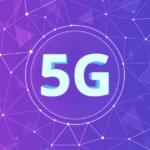
The 5G network, an improvement on the 4G cellular broadband came with its own glamour and glitz, with internet users having the leverage of using the fifth generation technology standard for broadband cellular networks perform different tasks on the internet.
While the 5G is just rolling out and yet to be available in certain regions and devices, a team of researchers at Korea’s LG Electronics has taken multiple steps ahead to not just work on the 6G network but also to set a record with the next generation broadband speed.
5G looks too good right?
6G is about to look perfect.
According to an LG news page detailing the results of their 6thgeneration wireless transmission technology test, the team working with a group at Fraunhofer-Gesellschaft, has successfully sent data 100 meters over a 6G signal.
The 6G communication technology is expected to transmit data at a speed 50 times faster than its predecessor the 5G network. It is also expected have just 10% of the latency of the 5G making conversations more natural thereby improving the accuracy of data sent. These improvements would further drive a wave of new “Internet of Everything” development, with new devices aimed at both the home and workplace.
The major problem with the 6G network as envisaged by scientists has been its short range due to loss of power in the course of its transmission. This has made the global standards body for data communications set its commercialization date for 2025, although most in the industry do not expect actual sales to begin until 2029 or later.
Earlier this year a team at Samsung set a new distance record for sending 6G signals—15 meters. The LG researchers have however gone far ahead, sending a signal 100 meters from the top of one tall building to another tall building. The secret of this feat according to the company is an amplifier they developed in conjunction with Fraunhofer-Gesellschaft, which has the capacity to generate stable signals as high as 15 dBm in frequency ranges between 155 and 175 GHz. The team also demonstrated adaptive beam forming which is a necessary feature that allows changing channels with the position of the receiver. They also conducted high-gain antenna switching, which is an important features that allows for multiple signal combination which would then be sent to a targeted antenna.
Imagine having to download over 100 gigabytes of information within minutes and seconds?
Yes, that’s what the sixth generation network is up to.
While no date has been explicitly set for the roll-out, we can be hopefully excited that a yet better network than the 5G is in the offing.
Discover more from TechBooky
Subscribe to get the latest posts sent to your email.







